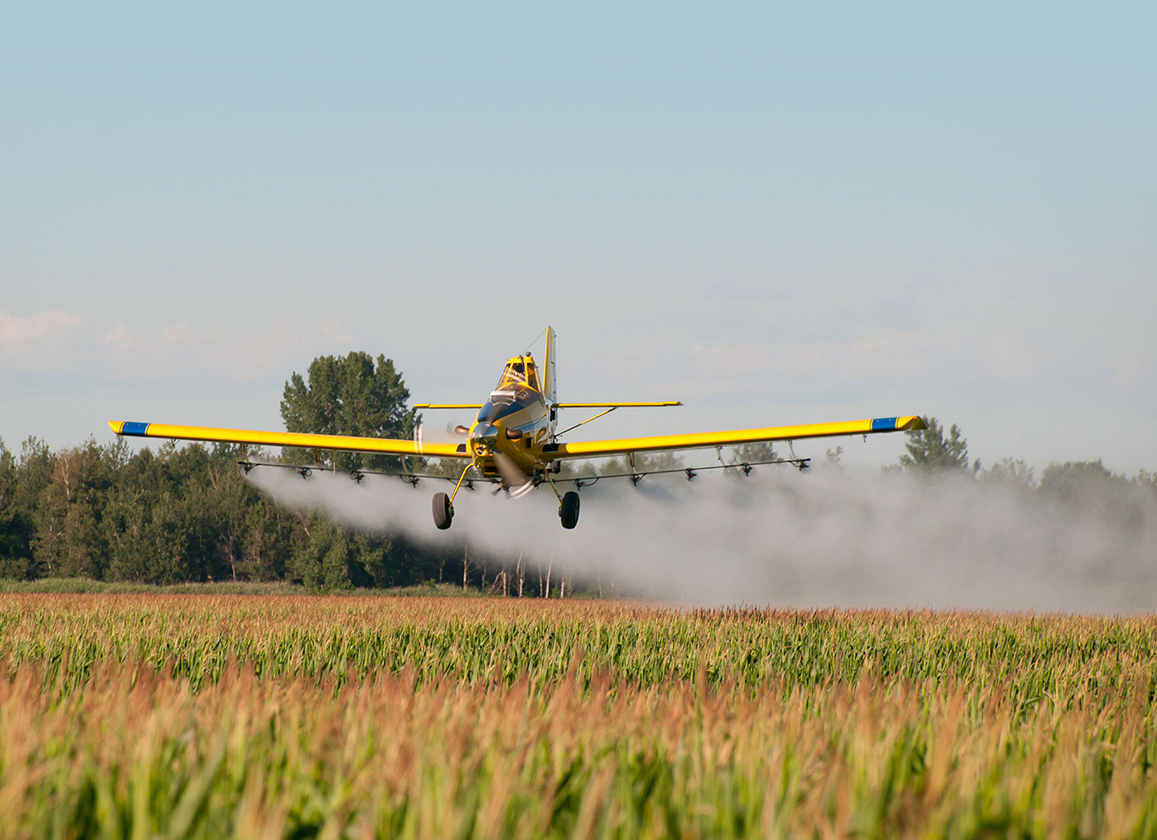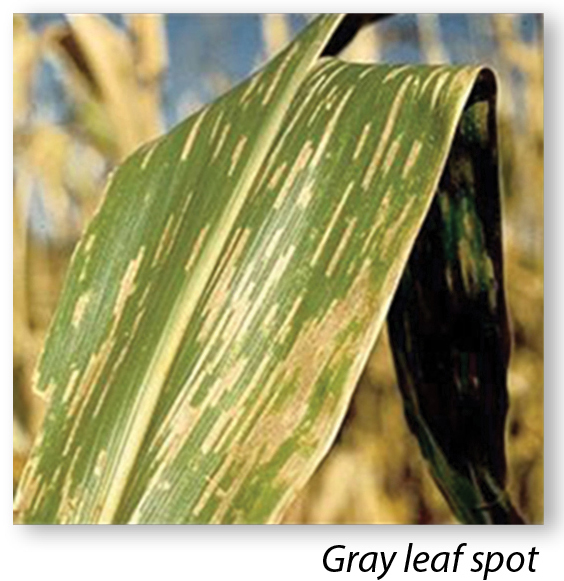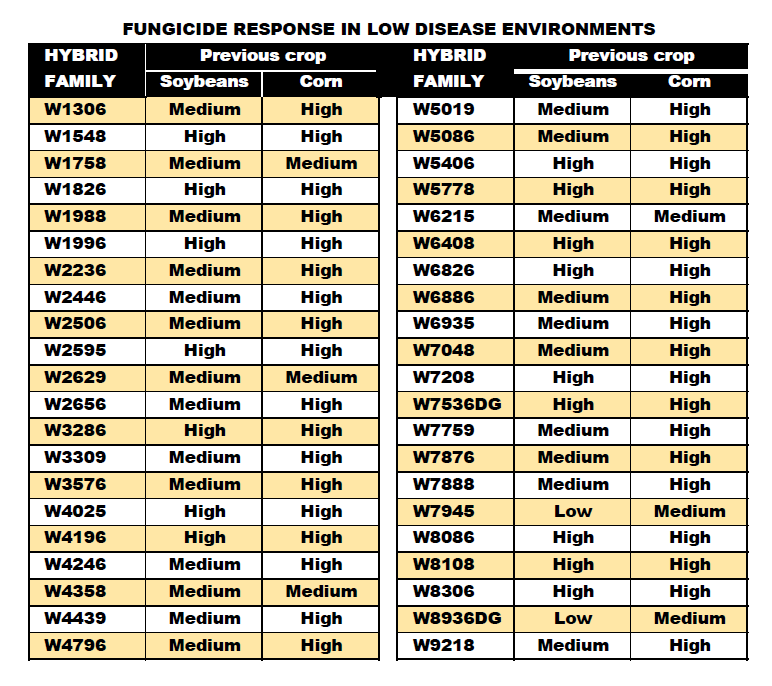A tool for higher yields
Fungicide applications are a tool corn growers can use to achieve maximum corn yields. Fungicide treatments have proven to protect yield potential when leaf diseases are present and improve plant health and standability at harvest.
Scouting for disease prior to tassel emergence is the best way to determine which fields would show the most positive response to a fungicide application. Considering other important factors such as field history, weather, and hybrid disease tolerance can also be used to improve your chances of a positive response.
Benefits of a fungicide application
§ Yield increase – Results from Wyffels Agronomy trials have shown that a full tassel fungicide application provided a 10 Bu/A average yield gain.
§ Improved plant health – Fungicides are designed to prevent the infection and/or spread of fungal pathogens. Keeping leaf tissue disease free allows for maximum efficiency during grain fill.
§ Better standability at harvest – An often-overlooked benefit of fungicide applications is improved late season standability. It’s not uncommon for a fungicide to extend the harvest window up to two weeks.

Other factors to consider
§ Increased grain moisture – One result of improved plant health is increased grain moisture. It’s more apparent at the beginning of harvest. As grain moisture moves closer to 15%, the moisture difference between fungicide treated and untreated grain decreases.
§ Ear damage – If fungicides are applied with an adjuvant prior to tassel emergence, ear damage can occur. To reduce risk of damage, do not use adjuvants at pre-tassel application timings.
Management recommendations
Given the positive yield responses and improved harvestability, applying fungicides at the full tassel to brown silk stage is a good recommendation for all hybrids. But some growers may be looking to focus on input costs and only plan to apply fungicide to a portion of their acres. There are different ways to decide which acres to focus your treatment on.

One approach is to choose based solely on hybrid characteristics. The downside with this approach is that leaf disease symptoms are often difficult to find and distinguish at the full tassel application time frame. Without knowing what diseases are present, it’s impossible to predict which hybrids will respond most positively. A more reliable approach would be to choose acres based on environments that favor leaf disease development rather than choosing hybrids.
Crop Protection Network - Fungicide Efficacy Guide
Environments that favor disease development include:
§ Fields with disease symptoms – It’s important to scout fields for disease symptoms prior to applying a fungicide. Identifying diseases before they become fully established will provide the best chance to preserve yield. Hybrids vary in their tolerance to diseases. Disease will spread faster on hybrids with a low disease tolerance, so they need to be treated if a fungal leaf disease is present.
§ Continuous corn fields – Many corn diseases overwinter on corn residue. Increased presence of residue increases the chance of disease infection.
§ No-till or minimal till fields – Similar to the point above, more residue left on the soil surface increases the chance of disease infection.
§ Low lying fields – Most fungal pathogens thrive in areas with high humidity and abundant moisture. Fields where morning fogs linger tend to be more susceptible to many of the corn leaf diseases.
§ Poorly drained fields – Wet soils create a humid environment in a corn canopy, and are also favorable for many stalk rot pathogens. Although fungicides don’t directly control stalk rots, they do protect leaf tissue from foliar fungal diseases. A plant with a healthy canopy is better able to fend off stalk rots.
§ Fields with recent history of corn disease – Fields that were afflicted with a corn disease within the past few years are prone to repeat infection due to the accumulation of infected residue.
§ Hail damaged fields – Hail provides entry wounds and weakens the natural plant defense mechanisms. Applying fungicides to hail damaged fields has shown positive yield response.
§ Fields with high yield potential – Plants that are supporting big yields are more prone to late season stalk issues. The longer plants can retain healthy leaf tissue, the better late season plant health and stalk strength will be.

Hybrid Staygreen Rating
Results from Wyffels Agronomy trials have shown that hybrids with lower staygreen ratings typically respond more to fungicides than those with higher ratings. A staygreen rating is a visual estimate of the amount of green tissue remaining in a plant near the black layer stage. It is a good indicator of late season health and plant intactness.

Conclusion
Fungicides are a valuable tool in raising high yielding corn. The benefits include increased yield, improved plant health and better standability at harvest. All hybrids can respond positively to a properly timed fungicide application, especially in environments that favor the development of leaf disease. Scouting for leaf diseases is the best way to target applications to ensure a return on investment.

